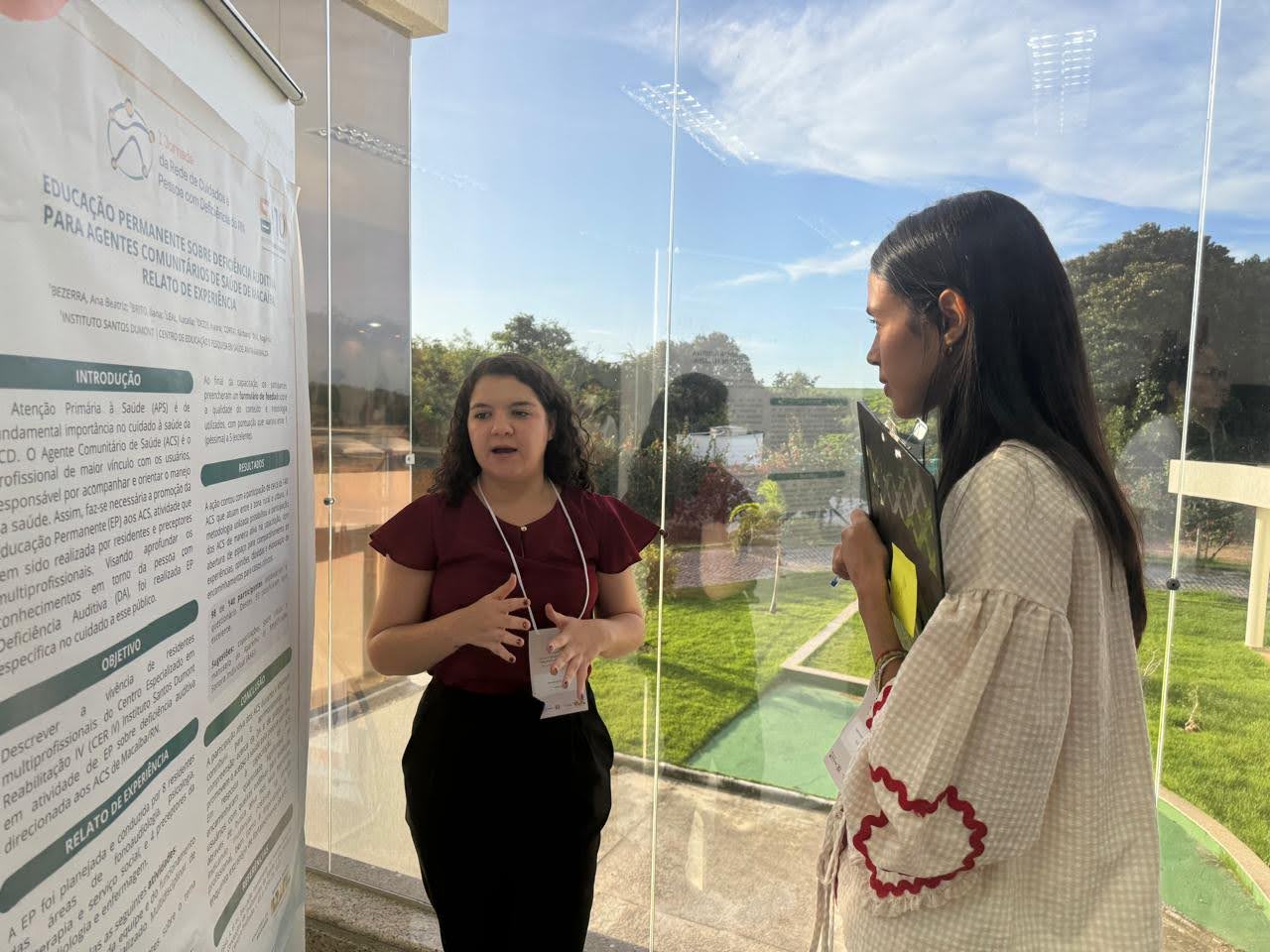Elderly caregiver Vanessa Ribeiro noticed that her youngest son Miguel, aged 5, was resistant to socializing activities at home and at school. The boy had difficulty concentrating and was constantly irritable, unusual behaviors until then. What Vanessa didn't know was that the cause of Miguel's discomfort was related to a vision problem, more specifically, myopia that significantly reduced the child's ability to see clearly.
The suspicion that Miguel might be having difficulty seeing only emerged during a face-to-face visit by professionals from the Visual Rehabilitation care line of the Santos Dumont Institute (ISD) to the Dayse Hall Municipal School, located in Macaíba, where the child studies. Miguel's case is not uncommon: in addition to him, 14 other students presented some vision problems after evaluation tests carried out by the visual rehabilitation team during their time at school.
After the initial diagnosis, both Miguel and the other students were referred for consultation with an ophthalmologist at the Santos Dumont Institute. Of the children who underwent medical evaluation, eight were diagnosed with a vision problem and will need to wear prescription glasses, while two presented more complex conditions and were referred for monitoring by the Institute's Line of Attention and Care in Rehabilitation of People with Visual Impairments. , a space aimed at stimulating skills and developing the capabilities of people with low vision (an intermediate condition between blindness and the possibility of seeing completely) or blind people.
ISD educator Luzia Guacira dos Santos, a professional who works in the field of visual rehabilitation, participated in the visit to the school and noted the high number of students with difficulty seeing. A problem that, when not treated properly, impacts school performance.
“It is very common for a student who cannot see well to get up from their chair to go to the board to look at the word and then return to write in their notebook. This is already considered bad behavior when, in fact, he has difficulty seeing what is written on the board. So, the teacher needs to pay attention and call the parents to talk about this possibility of a vision problem”, says Guacira.
In Miguel's case, the diagnosis of high myopia confirmed after a consultation with an ophthalmologist surprised Vanessa, the child's mother. This is because he had a deficit of 8.5 degrees in the left eye and 7.5 in the right eye. “No one expected this. His vision was very impaired,” he says. “Now, after the glasses, his quality of life has improved a lot, it’s not even comparable. He plays, runs, watches television, goes to school… He does everything normally.”
Miguel continues to be monitored by the ISD rehabilitation team. He has periodic consultations, every two months, with an ophthalmologist to assess whether his myopia has progressed. “For now, his grade has not changed”, celebrates Vanessa.
International Education and Inclusion Day
This Wednesday (24) World Education Day is celebrated. A date that reinforces the importance of education in the development of humanity in several aspects and reminds us of the challenges that the area faces, including the inclusion of students with disabilities.

ISD educator Luzia Guacira explains that students with difficulty seeing tend to have more difficulty learning. Photo: Ascom
As an example of this, a survey carried out last year by the Nova Escola Association found that, in Brazil, only 3 in 10 students with disabilities effectively participate in classes, either due to structural problems in schools or a lack of training capacity among professionals. This scenario reveals the need to expand inclusion policies in classrooms, as assessed by pedagogue Luzia Guacira dos Santos. In the case of students with low vision or blindness, Guacira suggests some alternatives that can be adopted.
“Many solutions are simple to apply. The school can think of teaching material with enlarged letters that makes reading easier; or even, in a classroom, use adapted resources to facilitate learning for students with low vision. For blind students, the audio description feature helps create an image of what is happening in the classroom, as well as Braille or audio-recorded materials that can facilitate access to the content being taught. The important thing, in any case, is to ensure that the person with visual impairment is included in the school environment”, observes Guacira.
When to seek help
The ophthalmologist preceptor at the Santos Dumont Institute, Gabriela Lima, explains that there is no rule for seeking professional help. She advises parents to pay attention to their children's symptoms and seek an ophthalmologist when changes in learning or attention deficits appear, in addition to possible complaints due to difficulty seeing.
“Ophthalmological evaluation is essential to rule out possible visual changes that justify difficulties in the child’s visual development. This assessment must be repeated annually”, points out the professional.
care lines
The Santos Dumont Institute provides free assistance to people with visual impairments through the Attention and Care Line in Rehabilitation for People with Visual Impairments, located in the institution's Specialized Rehabilitation Center (CER ISD). The initiative establishes guidance, qualification and rehabilitation strategies for people with visual impairments, with the aim of promoting quality of life and educational and social inclusion.
The target audience is SUS patients. Access to care is via direct referral from an ophthalmologist, with a defined report of blindness or low vision, or by spontaneous search by scheduling CER ISD screening.
The Line of Attention and Care in Rehabilitation of People with Visual Impairment also receives patients aged 0 to 18 years from public schools in the municipalities that make up the 7th Health Region of RN (Macaíba, São Gonçalo do Amarante, Parnamirim, Natal, Extremoz), where CER ISD is located, serving daycare centers and school levels from Kindergarten to High School.
Service
Find out how to make an appointment to access the Rehabilitation Attention and Care Line for People with Visual Impairment
Telephone numbers for scheduling: (84) 4042-0044 / (84) 4042-0033
Required documentation: SUS card; Identity document and proof of residence.















